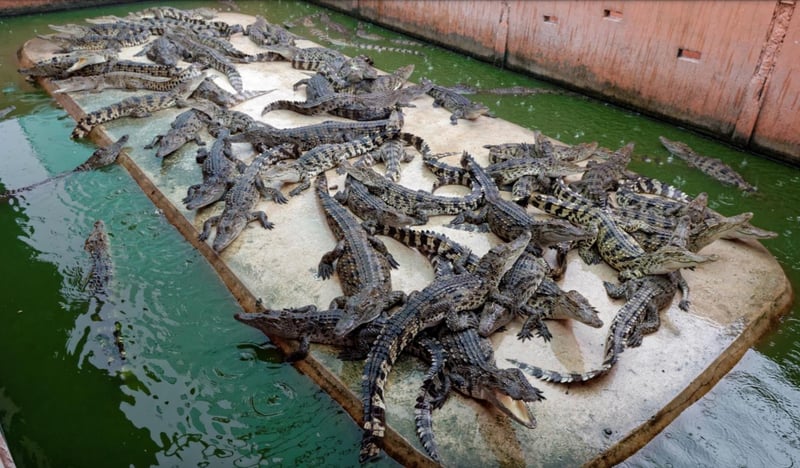
COVID-19 is widely believed to have jumped from wild animals to humans. Here’s why a global pandemic shouldn’t have been a surprise.
(This blog post is part of a series that draws from World Animal Protection’s groundbreaking Bred for Profit report.)
Transmissions of zoonotic diseases, such as COVID-19, occur when animals are in close proximity to humans. They cause an estimated two million human deaths annually. If we don’t fundamentally change our relationship with animals, it’s only a matter of time before the next pandemic hits. This is why.
Factory farming animals, whether minks and foxes for fashion or chickens and pigs for food, allows for diseases to rapidly spread through the cramped conditions these animals are forced to inhabit. In fact, Denmark slaughtered more than 14 million mink in 2020 due to a COVID-19 outbreak. United States legislators have since introduced a bill, the Mink VIRUS Act, in response to outbreaks on mink farms in the US.
Recently, wild animals including a polar bear, penguins, and over 500,000 seabirds have been killed by Highly Pathogenic Avian Influenza (HPAI) and millions of animals exploited for food have been culled as a result of the virus. While the current strain has a low risk of transmission to humans, it unfortunately can always mutate (especially given the number of species it’s infecting) and impact our health.
Of the zoonotic diseases found in human populations between 1940 and 2004, 72% came from wildlife origin. World Animal Protection’s recent Bred for Profit report estimates that 5.5 billion wild animals are farmed commercially across the globe—directly increasing our chances of another global pandemic.
Infections in wild animals can often go undetected due to challenges, costs, or even due to animals being asymptomatic. Some infections have longer incubation periods and lie undetected until they reach hazardous levels, making it almost impossible to prevent transmission. To this day, successful pathogen detection remains limited globally as our systems are not adequate enough to detect diseases or pathogens in animals.
Due to the commercial wildlife trade being so shrouded in secrecy, there’s a lack of knowledge of how widespread the industry is and the types of zoonotic dangers it poses. Our Bred for Profit report uncovered that between 2000 and 2020, there were wildlife farms in more than 90 countries, though only three countries had transparent, publicly accessible data available on commercial wildlife farming: Brazil, Denmark, and China. This is particularly concerning and needs to be addressed, especially in the wake of COVID-19.
While many assume zoonotic diseases only come from reptiles, birds, or pangolins, that is far from the truth. In fact, captive elephant populations often suffer from tuberculosis (TB), which has not been reported in wild populations. This suggests captive elephants most likely contracted the disease from contact with infected humans—and can also pass the infection back to humans or other animals.
In the US, approximately five percent of captive Asian elephants are infected with M. tuberculosis, though the standard for diagnosing active TB in elephants is insensitive and therefore some cases of TB might be missed. According to a 2013 investigation by officials in Multnomah County, Oregon at a local zoo, “close and prolonged contact, including spending multiple hours indoors with infected elephants, was associated with TB transmission.” The investigators identified three bull elephants with active TB and of the 96 individuals with contact to the elephants tested, seven close contacts were found to have a latent TB infection.
Asian elephants are more frequently infected with TB than African species, and that includes elephants who have traveled the United States for circuses like Ringling Bros. and Cole Bros. and those residing in zoos such as the Bronx Zoo. Like so many other zoonotic diseases, TB can reside in the body for decades before an elephant tests positive or shows signs of illness, posing a greater threat of transmission to humans who directly interact with them through feeding, rides, or bathing experiences.
It’s clear that when it comes to exploiting animals, humanity is playing with fire. We simply must put an end to this cruel and dangerous practice.
Want to help? Our team in Thailand has collected over 50,000 signatures calling on the Thai government to ban elephant breeding. Now we need your help to show that there is worldwide support!
Sign our petition demanding the Thai government enact laws so no more elephants are born into a life of chains and hooks.